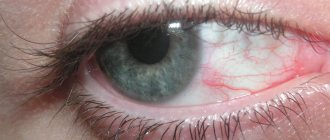Emotional Release Time: It's Okay to Cry
Today, the world no longer shrugs off negative emotions. Celebrities admit to anxiety and depressive disorders: close-up of Tim Roth shedding tears on the cover, Obama crying during a public speech. Today, it is normal to be sensitive, even if you are a man. Along with feminism, a movement is gaining momentum in Western countries, whose participants advocate for the emotional emancipation of the “stronger sex.” Now say: “Boys don’t cry!” - bad manners.
A UK survey found that modern men cry in public almost three times more often than their fathers, and four in 10 admit to tearing up in public in the last year.
And at the beginning of the 20th century, science claimed that civilization is a powerful cure for tears. First, the better you live, the less reason you have to cry. Secondly, unbridled impulses have a place in wild cultures, and in a developed society, cold reason rules the roost. It's a long time since there were medieval carnivals, when everyone could safely express their feelings in the square without fear of sidelong glances in their direction. In our country, the lamentable culture with its funeral, wedding, and recruitment rituals was washed away by the wave of industrialization. The Europeans who colonized the world not only “ordered” the chaotic, as it was then believed, life of the indigenous population of the new lands, but also taught the aborigines “progressive”, that is, dry, unemotional ways of self-expression.
Today, the concept of "reason versus feelings" does not stand up to criticism.
In 2011, Dutch psychologists calculated the tearfulness index of 37 countries. It turned out that in rich, democratic countries with an extroverted culture, where there is a cult of individualism, people cry more often than in less prosperous regions.
Perhaps guys from Nigeria, Bulgaria and Malaysia are more susceptible to depression - but they will endure it without a single tear. American and Australian men turned out to be the most tearful. Women in Sweden cry much more than women in Ghana and Nepal. In general, the less gender inequality there is in your country, the more likely you are to constantly wipe away tears. And the point is not that people with equal rights live worse - quite the opposite.
Tears are a luxury, a privilege and freedom of expression, and not at all an indicator of disaster and suffering.
If you are shocked, seriously injured, and generally at war, you most likely will not cry. A world in which politicians sob and ordinary people sit down to watch pitiful TV series in the evenings is a good, livable environment.
Salt water: the physiology of tears
Humans are the only creatures in the world who can release fluid from their eyes during intense experiences. Scientifically speaking, crying is the production of tears solely in response to emotions. Yes, you can spill them when chopping onions for a salad or if you unsuccessfully glued false eyelashes on and then stood against the wind - but this will not be crying.
Experts distinguish three types of tears: basal, reflex and emotional. The former protect, nourish and moisten the cornea; they are constantly formed in the body in an amount of about 2 ml per day. Reflex tears contain the antimicrobial substance lysozyme, they help wash away particles that cause eye irritation, for example, when you stand near a source of acrid smoke or when mascara has fallen off and landed on the mucous membrane. As long as there is no outburst of feelings, the scientist will say that you “have lacrimation.”
And only when we find out that he went on a date with someone else and the limbic system of the brain transmits a command to the lacrimal glands and the facial nerve, does crying begin in the full, scientific sense of the word.
The lips and nose twitch (facial muscles play out), and streams of tears flow down the cheeks.
In composition they differ from ordinary basal or reflex. They contain prolactin and enkephalin - hormones that have an analgesic effect, thanks to which we will feel better after crying.
Where do tears come from and what are they like?
A tear is a fluid produced by the eye gland to moisten and clean the surface of the eye. Most of it is water, sodium and potassium chlorides; other ingredients vary depending on health status
and moods. The enzyme lysozyme gives tears bactericidal properties, making them the same antiseptic as saliva or breast milk. Children's tears, caused by pain, may contain opiates, which have an analgesic effect.
There are three types of tears. Basal (that is, base, main) tears are constantly secreted to wet the eye. With a lack of tear secretion, irritation occurs - “dry eye” syndrome. To replenish moisture, you can buy natural tears in drops at the pharmacy. Reflex tears flow in response to irritants: mote, onion fumes, tear gas. This is a method of emergency cleansing of the eye from foreign particles. Emotional tears arise due to subjective psychological reasons; only humans can cry with them. Such tears differ significantly in composition: they contain more protein, the hormones prolactin and corticotropin. In stressful situations, adrenaline or norepinephrine may also appear in them.
Why are tears needed?
Why did humans develop such a complex system, but, say, a cat did not? Your pet will not cry out of resentment. Even if you insidiously sprinkle lemon in his eye, he will secrete a stingy reflexive tear and let him know that you have disappointed him - but you will not get tears of sadness from him that blinded Francis of Assisi.
Modern scientific theory states: the ability to cry is a consequence of our increased sociality. The habit of twisting one's mouth and pitifully smearing tears across one's face has also gone through a long evolutionary path. This is our SOS signal, a cry for help (sometimes silent), which promoted prosocial behavior, strengthened connections, and therefore was beneficial, especially in a group.
The point is not only that in the crowd where we decided to burst into tears, there may be compassionate old women or generous patrons of the arts. The evolutionary functionality of visible suffering is much broader: it is a way to ask for mercy from a victorious opponent from an enemy tribe, to evoke sincere sympathy from a large group - one’s own or others. Tears are a demonstration of grief that can be shared with fellow villagers. Because crying together at the funeral of a leader - it unites! And the one who does not roar looks suspicious. Crying strengthens our friendships - research shows that it actually helps you bond with your friends and allies.
The face of a person who has just cried is perceived in a special way by others. Experiments confirm that people are more willing to support those whose cheeks are suspiciously shiny.
It is not without reason that discharge from the lacrimal canal has traditionally been associated with matters of the heart. Before scientists got involved with their research, many interesting hypotheses were proposed to explain this phenomenon.
For example, the scientific theory of the early 17th century stated that tears are condensation: love boils the heart, steam rises from it in the head, and the remnants of hot feelings simply come out through the eyes.
If a person cries nearby, he thereby demonstrates his vulnerability, ability to suffer, love and experience affection. True, the sobbing trick is not always appropriate and not with everyone.
What folk signs exist about tears?
Any person is familiar with a state in which he cried from grief or from happiness. But not everyone knows that there are folk signs about tears. It turns out that our distant ancestors noticed that if you cry on one day or another of the week, it can cause various events.
Monday Tears
It turns out that it is useful to cry on this day - the sign says that in the near future a person will have complete order in his personal relationships.
Tears of Tuesday
It’s also good to cry - friends and relatives will be happy to help in some important matter.
Tears of Wednesday
You can cry on this day, but just cry a little. Then the person will receive recognition and popularity. But if you cry hysterically, loudly, you cannot avoid serious troubles.
Thursday's Tears
You can also cry, but lightly. In this case, you can hope for a fun and interesting event. Loud crying, and in full view of everyone, means trouble will happen to someone close to you. So it's better to do without it.
Friday's Tears
Everything here is somehow ambiguous: there is an opinion that having cried, you can expect changes for the better, but according to another interpretation, problems should be expected, and they will be associated with some kind of rival and confrontation with him.
Saturday's Tears
If you just lament and cry a little, this is a sign of imminent love adventures. And if you cry loudly and hysterically, you cannot avoid a quarrel with a loved one.
Tears of Sunday
On this day, it is also better to think a hundred times than to burst into tears, because if it is “dosed”, then this is a sign of good luck, which will await you in all matters. But if you cry loudly, then the person will become depressed.
Cry will make you feel better: how crying affects us
It is believed that crying helps us calm down. By rocking, hugging ourselves by the shoulders and muttering something, we relieve tension. True, among the participants in experiments there are always people who, after giving vent to their feelings, declare: “I feel even worse!” That's why you see articles in scientific journals every now and then with titles like "How crying improves (though sometimes doesn't) psychological well-being." For example, Dutch researchers forced subjects to watch heartbreaking film scenes, cry at what they saw, and then at certain intervals asked about their well-being. Scientists found that the experiment participants, who shed tears and said that after the film it was not easy for them, after an hour and a half began to feel even better than before watching the tearful picture. And those who stinted on emotions did not experience any takeoff.
However, tears can affect people nearby in completely unexpected ways.
A sensational study by Israeli neuroscientists has shown that women's tears reduce sexual arousal in men.
This is not surprising: if a loved one is crying, tenderness, hugs, and sympathy are appropriate, but sex looks like an unconventional solution, because the level of testosterone and aggression naturally drops.
Evil tongues say that women's tears are a tool of manipulation, otherwise how can one explain the fact that women cry on average 5.3 times a month, and men only 1.3? But scientists know nothing about such insidiousness - handing over a handkerchief, they admit that hormones are to blame. The same testosterone restrains violent manifestations of feelings, but prolactin, which women have in excess, can contribute to emotional outpourings.
How we perceive tears
Scientists asked 80 students to determine the strength of sadness of people in photographs. Half of the pictures were people with tears flowing. The other half was the same, but the tears were removed from the pictures in Photoshop. They also added photographs of people with completely different facial expressions.
Without controlling for age or gender, students rated pictures with tears as sadder than other pictures. In photographs without tears, participants even saw manifestations of other feelings: interest, boredom or anger.
The fact that newborns take several months to learn to cry is further confirmation of the evolutionary origin of tears.
According to one theory, a person’s tears, clouding and blurring his vision, symbolize the signal: “I am not able to defend myself and run away, you can trust me.”
Why are we crying
There are many reasons for tears: physical pain, personal loss, sympathy, ritual associated with collective screams, and the sight of one’s own apartment after it was renovated by a suspicious team of workers, and, of course, art.
Films have taken the place of Greek tragedies with their catharsis. The modern viewer more often blows his nose into a handkerchief while sitting in front of the screen than in the theater. German researchers became interested in which moments in movies evoke the strongest response from the viewer. The students who watched the film had their heart and respiratory activity measured, and at the same time monitored their skin reactions so as not to miss the moment when people began to get goosebumps. In addition, the participants did not hesitate to cry and, after the film, indicated the level of their experiences in a special questionnaire.
German psychologists have not discovered any America - most of all (in 70% of cases) people are most affected by sad episodes: partings, dying lovers, old people living their last moments. In second place were joyful events - the reunion of heroes after a long separation, the achievement of goals and other fanfare.
It is important that the vast majority of tear-jerking scenes demonstrated social interaction: in 70% of cases - relationships between people, in another 30% - between a person and an animal or anthropomorphic character.
It turned out that the intensity of the audience's passions also depends on the technical execution of the film. Unusual angles, shooting at an angle or from afar do not have any effect on people - the strongest effect is produced by close-ups of the faces of the main characters. These data are easy to interpret: we need crying primarily for social bonding.
In the modern world, a resident of a large city has lost the company to cry together, so he sometimes feels uncomfortable. Yes, culture is changing, interest in the individual is growing, caring for whom is becoming the main value; Yes, we have become more attentive to mental states and even take courses on the development of emotional intelligence.
What causes tears and whether you need to hold them back
When a person cries, he relieves emotional stress. Liquid is released from the lacrimal glands, due to which the blood vessels of the eye do not swell and swelling of the eyeball does not occur. In addition, the process is accompanied by active respiratory pumping of the lungs. The organs are saturated with oxygen and the severity of sensations weakens.
A person also cries because he experiences aesthetic pleasure. For example, admiring the talent of an artist, poetry, musical performance. Someone experiences indescribable emotions from contemplating the starry sky or the grandeur of mountain peaks. In this state, some people are able to disconnect from their defense mechanisms and contact something deepest and most intimate that is within themselves.
There is social crying. This is a type of crying that helps when communicating: with family, with a loved one, with a friend. Tears signal how vulnerable a person is and serve as an emotional anchor for the person to whom they are shed.
Should I hold back my tears?
According to psychologists, the habit of holding back tears will not end well. Often, by suppressing the openness of his emotions, a person ends up driving himself into depression. When you are sad or in pain, these are natural states from which no one is immune, and there can be nothing shameful in this.
By holding back tears, but still not getting rid of the pain, a person ensures that it turns from emotional to somatic. And there is a good statement about this by Henry Maudsley, a British psychiatrist. He noted that if grief does not come out with tears, it becomes a sob from the internal organs of a person.









